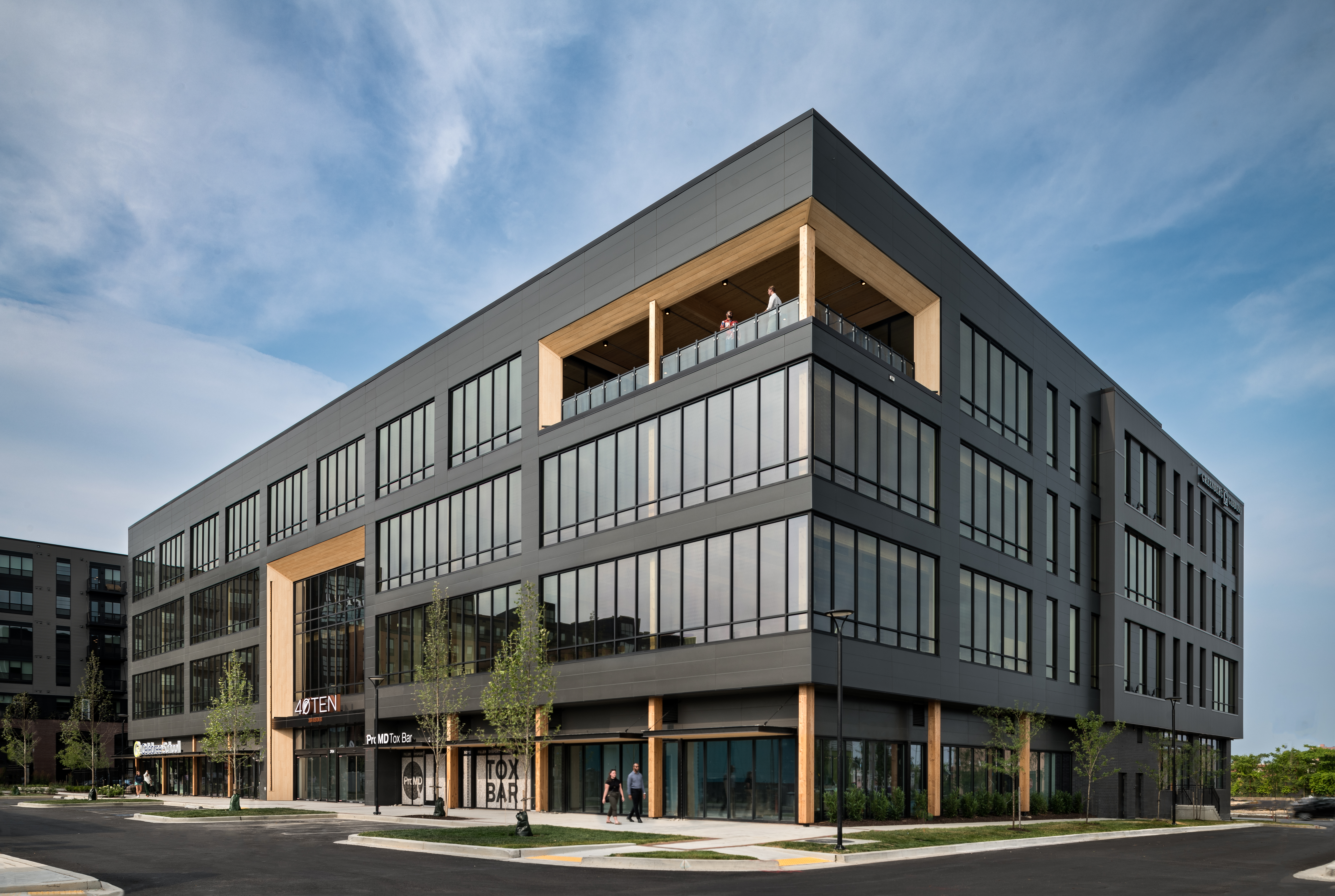Dynamic Glass Future-Proofs Envelope Design and Climate Resilience
Originally published on Architectmagazine.com
Climate change confronts architects like nothing the profession has ever faced before.

Few understand this growing challenge better than registered architect Michael Pavelsky, AIA, senior associate and sustainability director for The Sheward Partnership. Pavelski and his team of 15 sustainability experts have certified and managed nearly 650 LEED projects worldwide over the last 10 years. At any given time, his group is busy advising about 100 design teams.
“I lead a practice that provides direction to design teams, especially on building envelope and façade strategies,” the LEED Fellow explains. That starts by selecting materials that limit embodied and operational carbon, as well as identifying the best building orientation. They also address glass and cladding issues.
“Everyone wants a glazed façade,” Pavelsky says, despite glare, solar heat gain, and a near-constant cooling load. “Most commercial buildings, even in northern states, require year-round cooling because of occupant heat gain.”
Horizontal and vertical fins, louvers, and shading devices (“which nearly always stay closed,” Pavelsky says) are partial external and internal solar remedies. What’s called for, in Pavelsky’s view, is an adaptable glazing solution that plays fair with aesthetics, granting architects license to create future-proof, climate-resilient façades without sacrificing daylighting. No building orientation constraints. No louver and fin sourcing and expense. No health and wellness concerns over glare or air quality from dusty shades and blinds. In short: dynamic glass.
“Dynamic glass is discussed on every project we work on,” Pavelsky explains. “The technology solves so many envelope issues. You name it: environmental stewardship, occupant health and wellness, and even expense. Dynamic glass opens the door to a world of possibilities.”
Why the big shift to dynamic glass? Pavelsky cites at least four reasons:
- Affordable. The Inflation Reduction Act added dynamic glass to the Investment Tax Credit, allowing owners, including tax-exempt entities, to claim a credit or rebate from 30–50% on costs associated with dynamic glass. For developers and owners contemplating new or adaptive reuse projects, it’s a financial game changer.
- Proven. “We ask owners to experience dynamic glass on the hottest, sunniest day and hour we can arrange,” Pavelsky says. “Nine times out of 10 we hear, ‘Oh my goodness, this is amazing!’ Dynamic glass cools the room and changes the feel of the space. We have projects where we downsized the HVAC system because dynamic glass significantly reduced the cooling load. That’s less maintenance and energy cost.”
- Accepted. Pavelsky points to SageGlass, a Minnesota-based manufacturer of dynamic glass, as the leading example of technology maturity and acceptance. “SageGlass is the first in the U.S. to bring dynamic glass to market. They have the installations and experience.” SageGlass counts more than 1,500 installations worldwide, such as a new 850,000-square-foot regional financial services headquarters in Irving, Texas.
- Transformative. Workers today expect a destination, not just a location. Whether used in new construction or renovation, dynamic glass showcases a next-gen working environment. The 1K1 redevelopment in Conshohocken, Pa. illustrates how a SageGlass façade transformed a dated 1980s office structure into an uber-cool Class A marvel.
“Design teams need resilient, adaptable ways to combat climate uncertainty,” Pavelsky advises. “Who knows what kind of environmental challenges we’ll face in 10 years? Dynamic glass must be a key part of every project conversation.”
Learn more how next-gen dynamic glass from SageGlass enhances comfort, clarity, and aesthetics without compromise